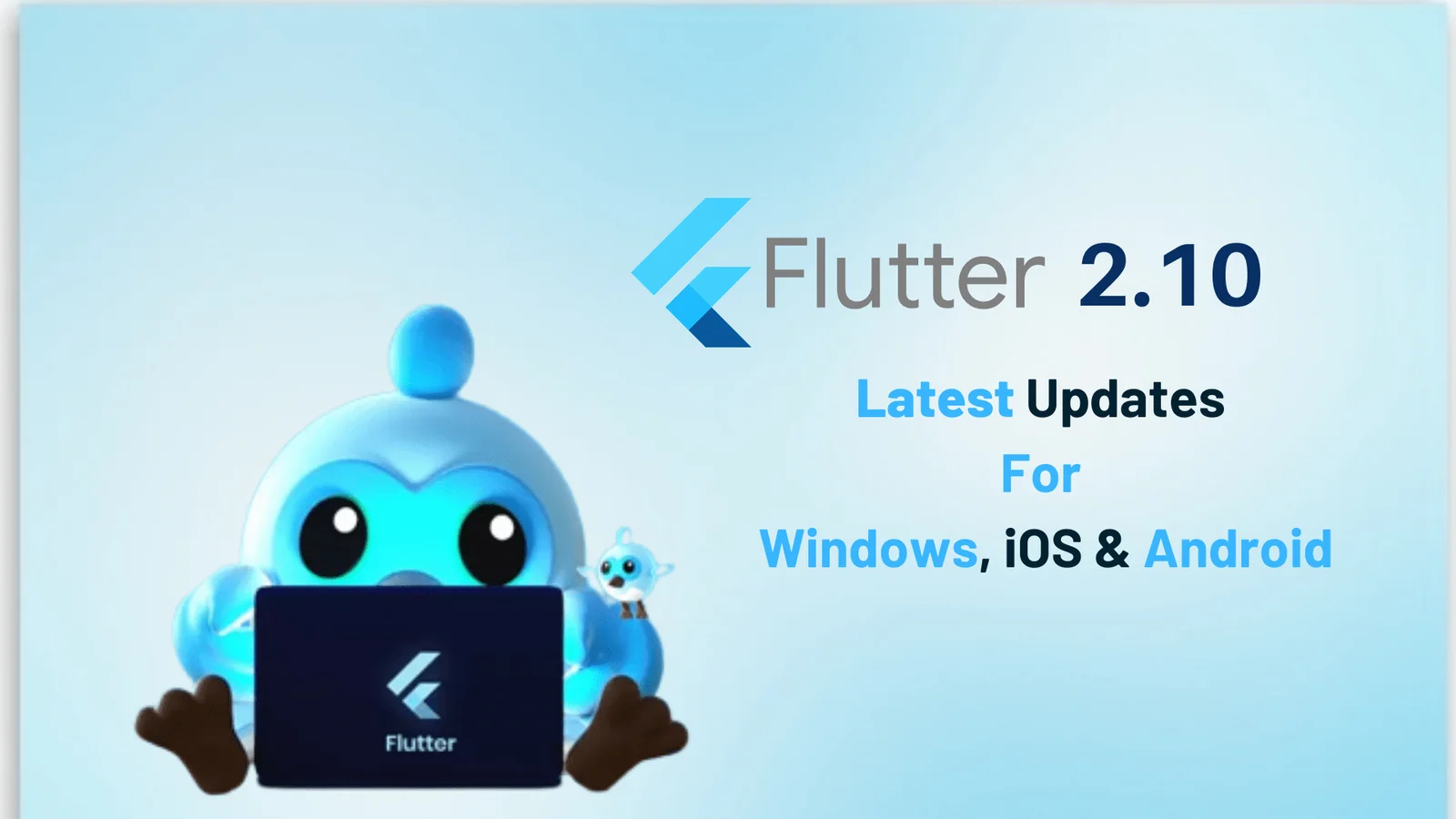It only has been a few months since Flutter released an update, and now it has come with another update, Flutter 2.10. With the help of multiple contributions worldwide, there are 1,843 issues closed successfully. Flutter is well-known in the modern market as a technology that helps developers build apps for different platforms. There were significant improvements in the last update. So, what makes this update remarkable?
1. Producing Apps on Windows
It was possible to build apps for Windows before, but now, there is no requirement for external efforts to make the Flutter channel stable. This feature is available by default in Flutter 2.10. There are new keyboard shortcuts, text handling, and keyboard handling functions with command-line arguments, globalized text entry, and accessibility.
2. iOS Updates
The top benefit the new update brings for iOS is reducing memory usage. 64-bit architecture for pointers gives access to pointers on the screen lot more than required, which is compressed in this update. When you make a complex app, the total pointers cover a significant amount of memory.
Also, a new enhancement to the keyboard animations is there, allowing smoother animations automatically to the app. Edge case crashes would no longer be a problem with the improved stability of the camera plugin for iOS.
3. Android Updates
Whenever you create an app, Flutter used to support the latest version of Android by default. This update has multidex support by default, and using the –multidex flag enables you to make your apps support multidex.
Also, Flutter has included steps to solve common issues. Now you will see Flutter’s suggestions for creating a better code.
4. Web Updates
You can notice a significant enhancement in text scrolling over the edges. Previously, when you select text from multiline text, it didn’t scroll correctly. Now, selecting text from the multiline text will seamlessly work even when you go outside the edges.
Another significant improvement is to reduce the overheads of mapping Flutter to a web. With this release, Flutter introduces a new “non-painting platform view” that essentially removes overheads. Every time you put a native HTML widget in your Flutter app, it creates an overlay in the previous versions. Each overlay enabled custom painting but create a certain amount of overheads, which is no longer a problem.
5. Improved Performance
This update brings back the dirty region management that enables partial repaints for a single dirty region in iOS. It reduced rasterization significantly on a few benchmarks and reduce GPU utilization from more than 90% to less than 10%.
Previously, Flutter introduced its own internal picture recording format, which is used for building optimizations in this update.
Performance enhancements, reduced memory usage, and reduced latency are going to be key features to look upon in this update.
6. Material 3
Flutter is beginning with transiting to Material 3 with this update, which will enable you to generate an entire colour scheme from a single seed colour.
Also, ThemeData.useMaterial3 flag will give you access to switch components to the new Material 3 look.
7. Improved Integration Testing
In December 2020 flutter_drive package was replaced with a new way to do integration testing, providing new features like Firebase TestLab support. In this update, several additions are available in integration_test to make the task consume less time. Guides already have been updated for the new updates in integration testing, and if you are not using integration_test till now, this can be the perfect time to do so.
8. Flutter DevTools
If you use command-line to update Flutter, then forget pub global activate, which you can do with a simple command dart devtools.
You will see improved support for inspecting large lists and maps in the Debugger variables pane.
9. Updates for VSCode
A pre-release version of the tester of Dart and Flutter is available in the VSCode extension library. Also, this update will enable you to pick the colour for elements in your code, and it will automatically generate the corresponding code for it.
10. No More Dev Channel
Flutter was working towards removing the dev channel recently, and in this update, you can notice to job done. Moreover, the Flutter tool is updated to help you migrate developers off the Dev channel. The dev channel support is no more in the DartPad, but on the other hand, the wiki is updated to reflect updated customer promises.
Some grey areas still need improvements, but that doesn’t let down this update. Flutter has ensured a significant place in the development industry, and we are already aware of the benefits it has brought. All of the updates mentioned above can enhance the development process experience. The different integrations introduced can remodel the development phase. Looking toward the final app, efforts are made to enhance its performance of the final app. If you haven’t moved to Flutter till now, then this update brings you an opportunity to start developing using Flutter.
Conclusion
Flutter has ensured a significant place in the development industry, and we are already aware of the benefits it has brought. Flutter 2.10 is the update that is ready to give your development experience a boost with the upgrades towards all major platforms, Windows, iOS, and Android. The different integrations introduced can remodel the development phase. Looking toward the final app, efforts are made to enhance its performance of the final app. Flutter is now has stepped up the ladder of preference of choosing a framework for an app.
It is necessary that you reach for a top Flutter App Development Company to hire Flutter app developers to build an effective app. This is your chance to grab this opportunity to make the most profitable app for your business.




